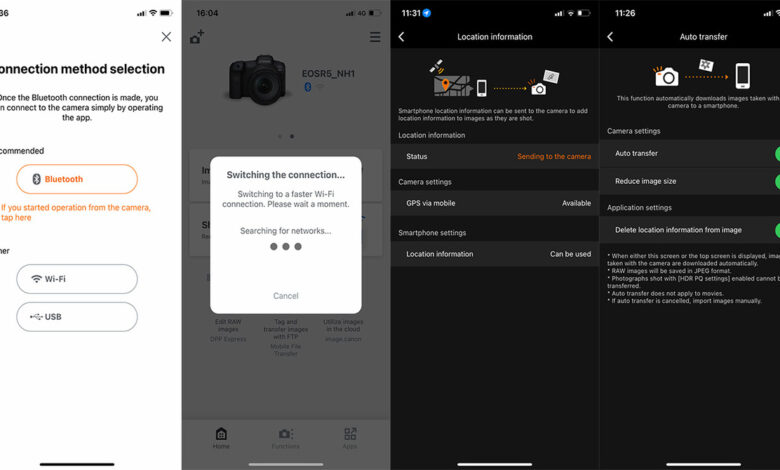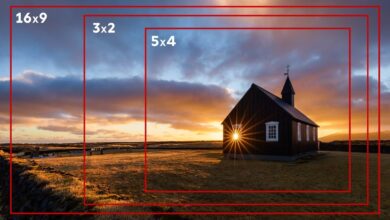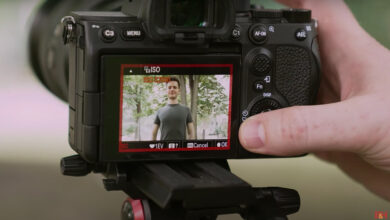How Useful Are Wireless Connections Between a Camera and a Smartphone?

Almost every modern camera comes equipped with some form of wireless connectivity. Manufacturers are even making them a prominent selling point. But just how valuable is this feature in reality? In this article, I want to dive into the possibilities and their value.
The wireless capabilities of contemporary cameras are becoming increasingly sophisticated with each new model release. Personally, I’ve observed significant improvements in the way these connections operate, at least in the context of my Canon cameras. However, I must admit that I haven’t extensively tested this feature with all the other camera brands I’ve reviewed so far.
My experience with the Fujifilm X100T has been somewhat challenging. Establishing a connection between my smartphone and the camera via Wi-Fi often required a considerable amount of effort. Even when successful, there was no guarantee that the connection would work smoothly a second time around.
I’ve heard similar complaints by photographers using Sony and Nikon cameras. While I’m more acquainted with connecting my smartphone to a Canon camera, I’ve encountered some peculiar issues with it as well.
Thankfully, improvements in smartphone apps and camera software have made the process more streamlined than ever before. Even so, setting up a wireless connection can be challenging nevertheless.
Exploring the Potential of Wireless Connections
For those who’ve never used their camera’s wireless connectivity before, the question of its benefits might arise. I myself had these doubts initially, but I’ve come to realize that it can indeed be quite useful, sometimes even essential. However, there are instances where alternative methods might be more convenient.
1. Collecting GPS Data
If you’re interested in adding GPS coordinates to your photos, the wireless connection between your camera and smartphone enables the camera to gather GPS data, which is then automatically embedded in the image’s metadata. Keep in mind that for this feature to work, your smartphone needs to remain continuously connected. Bluetooth is likely the best option, although a Wi-Fi connection could also suffice. While this could impact your battery life, the effect might be less significant compared to using a built-in GPS system.
When I need GPS data for my photos, I prefer using an external GPS logger. This could be a smartphone app or a standalone GPS logger like the Columbus P10 Pro. It offers additional functionalities, and adding GPS data to your photos is a straightforward process in software like Lightroom Classic.
2. Transferring Captured Images
Transferring photos to your smartphone is another possibility. Both raw or JPEG files depending on the app, and some cameras even support FTP connections, enabling you to save images on a server, computer, or smart device. However, beyond studio environments, I struggle to see the benefits of wireless file transfer options. Even for studio photography, there might be more efficient alternatives for transferring images, like tethered shooting.
Personally, I can’t see the benefit of transferring captured images directly to a smartphone. Storing raw or JPEG files on a limited smartphone memory doesn’t make much sense. If you have valid reasons for doing so, I’d be interested to hear about them.
3. Sharing Photos
Transferring images to your smartphone might prove useful if you intend to share them on social media or perform post-processing on your smartphone. Yet, this method strikes me as labor-intensive. The process involves taking a photo with your camera, switching to your smartphone, opening the image in an app, applying post-processing, and finally sharing the photo. Why not simply take the picture using your smartphone in the first place? It’s a more straightforward, time-saving, and often a user-friendly approach.
4. Remote Trigger
Enabling the shutter remotely via a wireless connection is a great option. This is particularly true when you want to include yourself in the frame. With this feature, you’re no longer bound by the 10-second self-timer for positioning yourself. Additionally, the 2-second or 5-second self-timer options provide enough time to conceal the smartphone out of sight.
In my opinion, this functionality is genuinely useful. You need to keep the effective range between the smartphone and camera in mind, because there is a limit. If that becomes an issue, a wireless radio trigger serves as a more practical alternative. On top of that, it’s easier to use, potentially quicker, and requires less attention to find the trigger button. Nevertheless, there are situations where the built-in wireless connection’s convenience shines.
5. Remote Live View
One step up from a simple remote trigger is remote live view. There are instances when I need to control the camera remotely, such as when it’s mounted on a pole at a height of two to eight meters. This is when I find the remote live view function of the Canon app invaluable. It allows me to preview the shot and adjust exposure settings as needed.
This functionality proves beneficial for various photography styles, including macro photography or situations where the camera is positioned out of easy reach. For me personally, this is the most useful wireless connection feature.
Challenges You Might Encounter
Using wireless connections involves continuous communication between the camera and smartphone, which can drain the battery rapidly. This is a crucial consideration, and if you frequently use wireless connections, having a spare battery on hand might be wise.
Stability of the connection is another factor to keep in mind. I’ve noticed that something as simple as a sleep mode or standby setting can disrupt the connection, especially with Wi-Fi. Also, if your smartphone detects a known Wi-Fi signal that has more signal strength, it might switch over without warning. If this happens, it might prove a lot of effort to restore the connection.
Bluetooth, Wi-Fi, and Airplane Mode
In my experience with the Canon EOS 5D Mark IV, establishing a reliable Wi-Fi connection proved challenging at times. Particularly when a known Wi-Fi network was available, my smartphone seemed to prioritize that network over the camera’s. However, when it did work, it worked flawlessly when I used the camera mounted on a pole.
If your camera supports Bluetooth, which is likely the case for most modern cameras, setting up both Bluetooth and Wi-Fi connections is advisable. The camera tends to connect more seamlessly through Bluetooth, and if greater bandwidth is required, it will automatically switch to Wi-Fi. This approach offers improved reliability and faster performance.
If you’re concerned about battery usage while keeping Bluetooth active, activate the Airplane mode on your camera. This turns off all wireless connections at once, conserving battery life. The beauty of Bluetooth lies in its ability to re-establish the connection automatically once Airplane mode is deactivated.
Final Thoughts on Wireless Connections
Initially, I was skeptical about the usefulness of wireless connections between smartphones and cameras. However, my perspective has shifted, particularly after extensively using them for remote live view photography. This functionality proved indispensable in such scenarios. There was, however, one challenge, establishing a stable Wi-Fi connection.
Combining Bluetooth and Wi-Fi turned out to be a great solution, provided your camera supports both. Unfortunately, good documentation on wireless connection setup is often lacking, and discovering the most efficient and user-friendly way to connect your smartphone and camera requires some research.
While not all the available wireless connection options are equally beneficial, having these choices at your disposal is valuable. Even if you personally don’t find them useful, others might find them indispensable. Ultimately, the presence of these options provides flexibility without imposing an obligation to use them.
For those whose cameras support wireless connections, I encourage you to explore this functionality. Establish connections, familiarize yourself with the setup, and learn how to make the use of them. At some point, you might find yourself in a situation where wireless connections prove remarkably advantageous or discover uses you hadn’t considered before.
Feel free to share your experiences and uses of wireless connections between cameras and smartphones or other devices in the comments below. I’m eager to learn about your insights.




